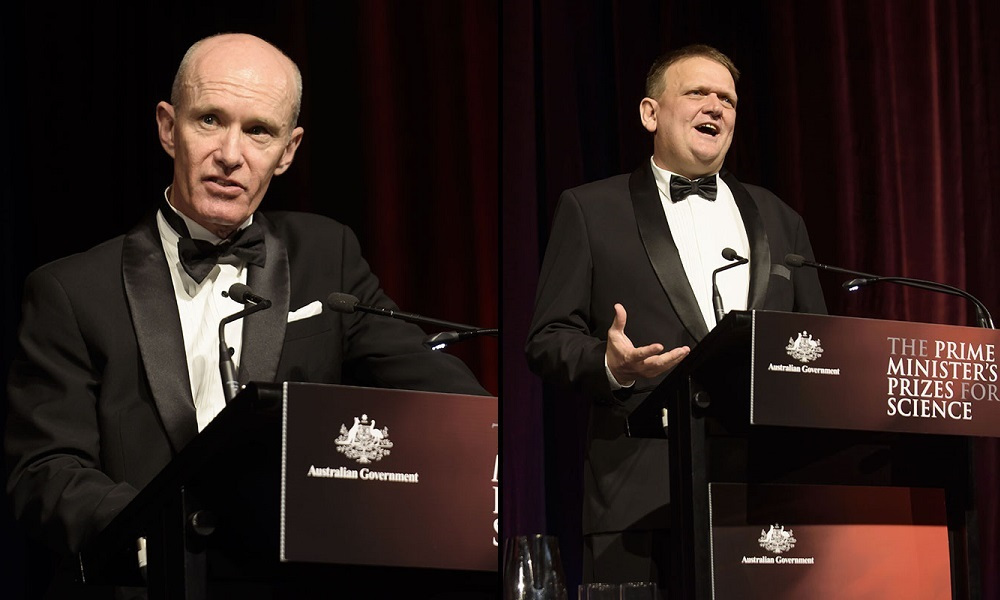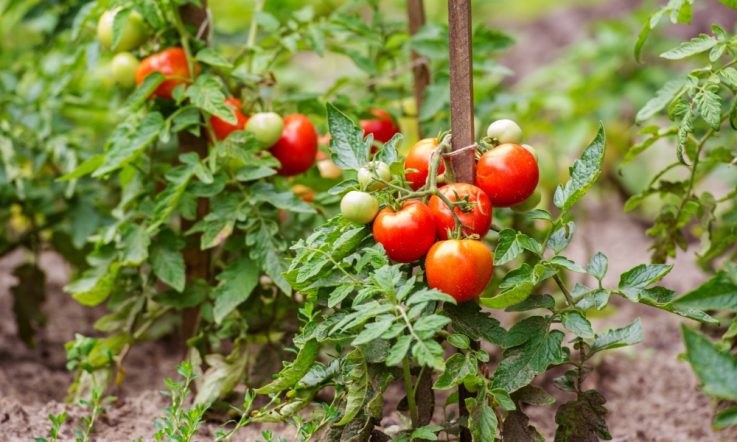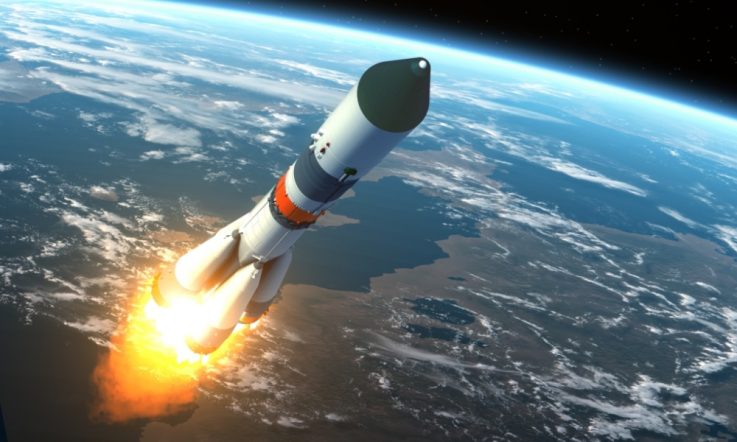This podcast from Teacher magazine is supported by the Queensland Department of Education and Training. We're now recruiting teachers of all year levels, subject areas and professional experience to Teach Queensland Style! Discover outback Queensland and advance your teaching career. To find out more and apply, visit www.teach.qld.gov.au
Hello, thank you for downloading this podcast from Teacher – I'm Rebecca Vukovic. In this podcast special we're speaking with two educators who are changing the lives of the students in their schools by instilling a love of Science in them. Both teachers were named winners of the Prime Minister's Prize for Excellence in Science Teaching – one for primary and one for secondary. We'll be speaking to the secondary school winner Brett McKay later in this episode but first, we have Assistant Principal Neil Bramsen from Mount Ousley Public School in New South Wales. He was awarded the coveted prize for the way he's formed innovative partnerships with scientists, the community and other schools. Here's Neil sharing more about these partnerships.
Neil Bramsen: One of the things I'm always keen to do is leverage expertise in the community and externally. Teachers shouldn't be the experts in everything they do, they should facilitate making good things happen. So, over the course of probably 10-12 years now I've looked to pick up on those people externally that can help us and some of those examples have been, the common one that a lot of people would know in Australia is the Scientists in Schools program, whereby scientists from universities or in professional practice make a link with the school and we've had a couple of scientists from the University of Wollongong, which is just down the road from us, come in and run workshops and sessions with students on bacteria and biology-type aspects.
Things where they're better equipped to deliver that learning and make it engaging and having the resources to make it happen has been really beneficial. Similarly, we've taken opportunities, using things as simple as Skype to connect with schools in Africa. We were doing a national parks unit last year with a Stage 2 class; we're comparing and contrasting, so one of those things we did do was connect with Yellowstone National Park and have their rangers talk to our guys about the different flora and fauna that you find between, for instance The Royal National Park and Yellowstone – two of the oldest national parks in the world.
Rebecca Vukovic: Research shows the most effective schools identify appropriate partnerships to address specific student needs. Here's Neil sharing more about how he goes about selecting the people or organisations he partners with.
NB: There's a degree of luck and good fortune as well. A lot of it today in this day and age is networking and particularly using social media. For instance with Twitter, Twitter enabled that connection with Yellowstone. I use Twitter regularly to showcase student work and to share my learning. Yellowstone does a similar thing through their rangers in terms of promotion and education for community. So Twitter was a great connection on that point.
Some information comes through your generic departmental emails and contacts, and then others is making connections and just asking people ‘look, I think you've got some good expertise here, would you mind sharing some of that time with the school?' Of course, you may get a ‘no' and that's more than acceptable, everyone is busy, but quite occasionally people go ‘yeah that's a good thing I'd like to help out' and if it's an area of interest for themselves or if it's their niche, then they're probably quite excited to share back to a school community about something that they're passionate about.
RV: Neil has said that science is a way of hooking kids into learning. Here he shares some examples of how he hooks kids into learning in his lessons.
NB: I think in primary school, it is our job to hook kids into learning, be it Science or any other learning area. So for myself, and focusing on Science and Maths predominantly, it's really about picking topics, concepts, content even [that has] that potential to be interesting. With Science, you've obviously got the physicality and the notion of chemicals, mixtures, those things we're all used to, such as slime, volcanoes, and elephants' toothpaste. One of the things I do because of my connections with the Honeywell Space Academy for Teachers is rocketry. So, when you have kids building a model rocket and then testing it and repeatedly improving it and firing it, they're seeing something that is really exciting. I mean, all kids love a little explosion in a safe manner, and those types of things are what gets them in.
But the other simple way is you can look at Kindergarten, you can put a saucer of milk on the carpet, put in some food colouring and add some detergent and look at surface tension; and you've got those scientific questions being posed and the mind buzzing and the kids are just ‘wow!' So it doesn't have to be big, it doesn't have to be fancy, it doesn't need expensive toys, I think anything that's hands-on, hands-on learning is really the best way in.
RV: Neil is passionate about getting his students to problem solve and seek answers to their own questions. For example, students at Mount Ousley created the school's butterfly garden themselves. They researched, costed, ordered and constructed the garden, which they now use as a space for reading and quiet activities. Here, Neil shares another example of what happened when the school Kinder found themselves with an empty sandbox.
NB: The empty sandbox – well we had unhappy Kindies. The sandbox – it's very non-descript and low-key, it's effectively a sandbox on some legs in the playground that was put in a special place for Kindy to use and just have a place to play. It's about two metres by two metres and a foot deep, or so. So that box was empty. The tradition was a couple of times a year we'd get a truckload of sand in and top it up until the Kindies had emptied it again because they were having fun. Then I was looking at opportunities, how can I bring project-based inquiry learning into the school? I'd been to High Tech High in San Diego and looked at some of their project-based learning approaches and it's really about having open questions. So my question to some Year 3/4 students was ‘well the sandbox is empty, how much sand do we need to fill it?' It's as simple as that.
And then letting those students go on a journey of ‘how are we going to test or identify the volume capacity of the box', ‘what are we going to do it with?' and so on. So in this case, students came up with pouring litre jugs of water in to try and measure in volume using water. That didn't work, the water ran out. We had kids using [square blocks], so a thousand squares and they were building those up in a physical sort of block array to calculate the capacity. Some students could focus on area, other students straight away knew that the concept of volume was at play and were doing three-dimensional measuring. So we had these students trialling different ways of calculating the amount of sand needed to fill that box and we got there. Probably four groups of the eight came up with an answer within about 10 per cent of what was pretty accurate, which was quite good because it's not always about getting the right answer in this process, it's about all the students having entry points for success. So some students might be good at working out area but don't have those cognitive skills to get to the three-dimensions volume and capacity. So different students work on different aspects.
We then had students costing what that sand would be from a supplier and they were able to ring up with the school credit card and order that. So before it was delivered they had to construct a map that got the truck into the school in a safe way and they had to make sure that when they ordered the sand that it didn't arrive at lunch or recess obviously because that was playtime. So, it was a real practical learning event that substituted, complemented, replaced aspects of my maths teaching for that two, three or four weeks and allowed me to backward-map some of those outcomes into other areas of the curriculum as well.
RV: Both winners of the Prime Ministers Prize for Excellence in Science Teaching were awarded $50,000 in prize money. The prize money is shared equally between the recipients and the schools in which they teach – the schools' share must be used to enhance student learning. Here, I asked Neil how he intends to use the prize money.
NB: The component going to the school – we've already planned quite excitedly what we can do with that. We're going to do two things. We're not going to buy lots of toys, but we will buy or top up some of our resources which will be looking at probably a Lego Robotics Model because that's quite flexible across K-6. It offers some scope for computational thinking and coding – coding not being the only way into computational thinking, but it's certainly an accessible one. Primarily though, everything we will do will be about building teacher capacity and it's always about teacher capacity and teacher quality in any professional learning and any investment of funds.
RV: That was Neil Bramsen there, assistant principal of Mount Ousley Public School and winner in the primary schools category. Now we move on to the other end of the school age range and hear from Brett McKay who is Head Teacher of Science at Kirrawee High School in New South Wales. Much like Neil, Brett is also very focused on forming partnerships with experts in the community. Those partnerships have included lectures at University of New South Wales and visits to Sydney Observatory. Brett was awarded the prize in the secondary schools category for the way he encourages his students to love science and use it in their daily lives. Here, he shares how he goes about doing that.
Brett McKay: [The biggest thing is] science is all around us, science is actually a part of life, and quite often the students see science as being what's done in the classroom and they don't see where it's related to what's happening around them. So by constantly getting them to talk about what they're doing in their lives, and trying to talk to them about how science has an impact on that, that's the first thing. It makes it so it relates to them so they can actually understand what's going on and they can actually see that science is around them. It probably first started way back when I started teaching over 20 years ago when some of the girls came back who went off to do apprenticeships as hairdressers and then came back and started saying, ‘hey we need to know about chemistry, can you give us some information about it so we can actually do our apprenticeship?'
From there it's been one of those big things that I always do is try to relate it back to what are the opportunities out there, how science is working on them… So it's not forcing them to go and listen to someone who they don't necessarily want to hear, but making them aware of the opportunities that are there and therefore enable them to go from there.
The other two ones that I'll mention is the one with ANSTO [Australian Nuclear Science and Technology Organisation], the nuclear reactor at Lucas Heights, where we sent six female students for the last two years out to ANSTO to actually do a work experience program out there, where they actually work in areas that even the teachers can't get to. And what they're finding is that scientists are so much more than what they really thought they were.
They're finding that you don't have to be the top student, you don't have to be the one who's the nerd in the class to actually be a scientist and they're starting to actually realise that science is so much broader than what they see at school – that there are so many different opportunities. And they felt before they went that Science is pigeon-holed into Physics, Chemistry, Biology and found out that it's not. It actually can be starting off in Chemistry and you might be in a number of years later be working in Biology or working in Environmental Science, and how it's all those fields working together is how real Science is. And by being immersed with them, all of a sudden, they're now realising, ‘hey we can do Science'. So some of them who were mid-range students are now topping some of our courses in Year 11, by actually having that engagement with them.
RV: Having been a teacher for 20 years or so, Brett has discovered the importance of connecting students with experts who work in their area of interest. Here, he shares more about how he goes about arranging those partnerships.
BM: I always take the viewpoint of, every student has their own interests and a Science teacher has got passions and interests in areas but you're never going to fully match up with the students. So I'm always looking for things which complement my interests. Therefore, if I have a passion about things and I see something that's a little bit off, that's not where I'd normally, possibly fit, it's trying to look at those and say, ‘hey that's not where I am but that might be the students' interests so therefore how can we actually make so they have those opportunities?'.
Like with the Australian Museum with their new frog ID program, I'm not a biologist and by looking into that and being able to find out about that, it was actually something that I could bring to those students and say ‘hey, here's another opportunity which is broader than what I would normally be talking to you [about]' and therefore going from there. That's the first thing, looking for things that complement.
The second thing is it needs to be something where the kids are actively engaged. Just going to talks and things is something they can follow with their interests, but more importantly, if the students can actually be immersed or engaged in something, and they're going to see something which they don't have the opportunity to do at school, or done in a way that's going to add a different viewpoint to what they've got, those are the things that I'm looking for in terms of projects.
RV: Brett was also awarded $50,000 in prize money in recognition of the impact he's made to the science teaching profession. Here he shares how he plans to go about spending it.
BM: At the moment we're still discussing it. What I've actually done is actually talk to the students and ask them what they think we need. So it's actually looking at it from: What are the school's needs? What do the students actually take on? I was inspired by Neil, the primary school winner, with their butterfly garden which they've actually set up. So some of the discussions have been ‘is there a possibility of making an eco-system that we could actually have the students try and make sustainable?'
Other options we're looking at is trying to come up with ways [to improve students' cognitive ability], improve their thinking skills, and so there are a couple of projects that we may do from there. Or see if we can come up with something that makes things a little bit more problem-based learning focused in some of the activities we do. At the moment it hasn't been decided because I think such a significant amount and such a worthwhile thing really needs careful planning. It needs to really say ‘we want to make a long-term impact'. And so, from that we're still working on what's the best way that we can actually do that for the students.
That's all for this episode, to keep listening or to download all of our podcasts for free just visit acer.ac/teacheritunes or you can head to soundcloud.com/teacher-ACER. Of course, you can also check out the full transcript of this podcast by visiting our website teachermagazine.com.au where you'll also find the latest articles, videos and infographics for free.
You've been listening to a podcast from Teacher magazine supported by the Queensland Department of Education and Training. Apply now to Teach Queensland Style and bring your passion for teaching, love of sunshine and sense of adventure! To find out more and apply, visit www.teach.qld.gov.au
Neil Bramsen says Science is a way of hooking kids into learning. Consider how you could do this in your own classroom? What activities would you run and what approach would you take?
Brett McKay says that when forming external partnerships, he’s always looking for projects that actively engage his students. How do you go about forming partnerships in your school setting? What things do you consider before making your decisions?



